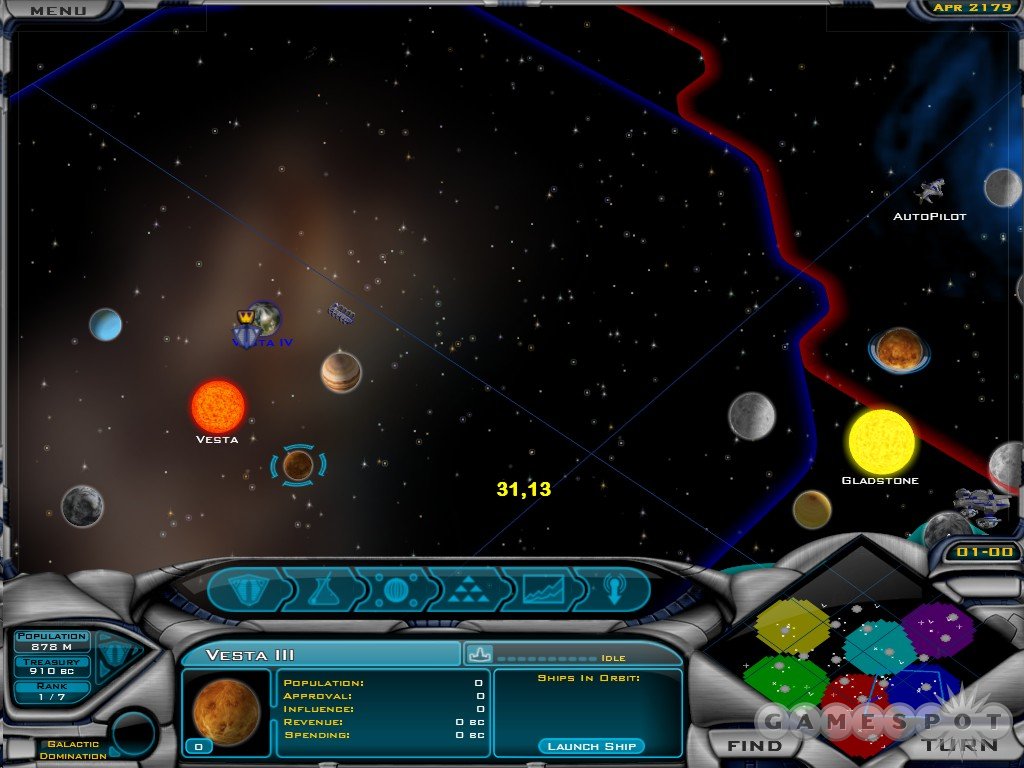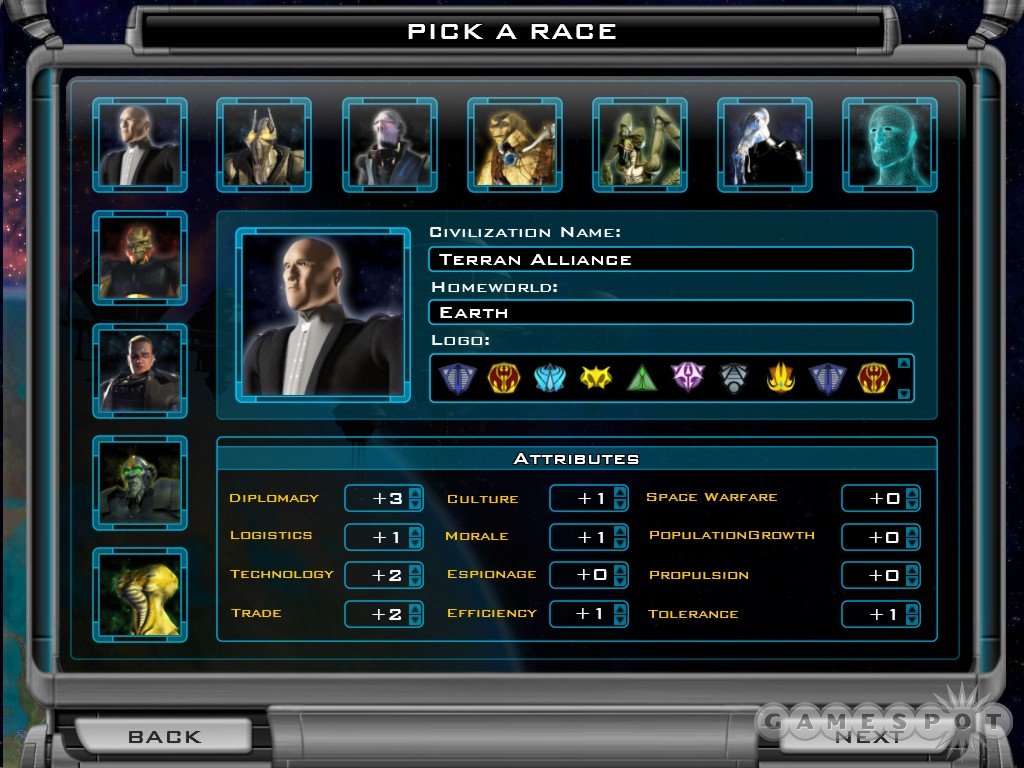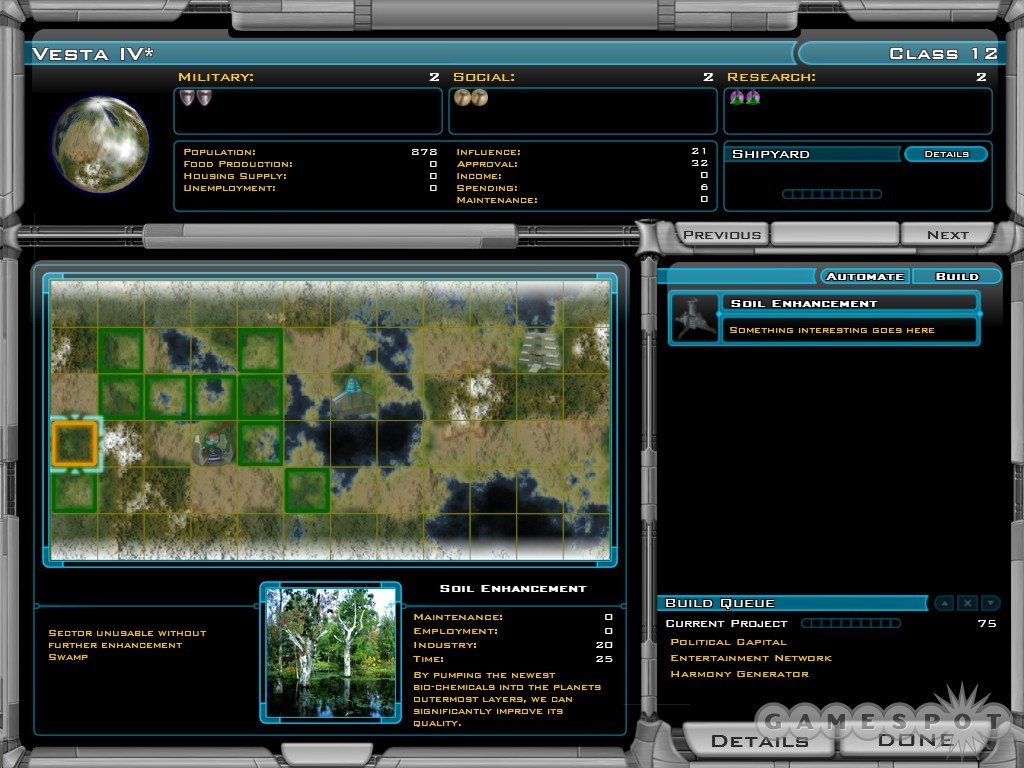Galactic Civilizations II: Dreadlords First Look
We get the first details on the sequel to 2003's acclaimed space turn-based strategy game.
The original Galactic Civilizations is perhaps one of the best PC strategy games you've never heard of, mainly because it debuted in 1994 as one of the few games designed for IBM's OS/2 operating system. That changed a couple of years ago, when developer Stardock finally brought Galactic Civilizations to Windows, and strategy fans embraced the game's depth, strong artificial intelligence, and diplomatic options. Now Stardock is working on Galactic Civilizations II: Dreadlords, and there are a whole slew of improvements and enhancements planned. Thankfully, Stardock CEO Brad Wardell gave us a rundown of what to expect.

This new Galactic Civilizations will represent a complete overhaul for the series, as pretty much everything is getting rewritten or improved. Galactic Civilizations II will introduce a single-player, nonlinear campaign, which is a new feature for the series. You'll still be able to play random games against the computer, but you can now pursue the campaign storyline, which pits the young races of the galaxy (including humanity) against the precursor races. The campaign will have a branching mission structure, so the story will adjust depending on whether you win or lose a mission. The other big news is that you'll no longer be limited to playing the human race, as you can now play all the races included with the game or you can even create your own race in the game-setup screen.
The most obvious upgrade is the new 3D graphics engine that powers the game. Gone is the top-down, 2D graphical look from the original game and in comes a fully 3D engine where you can pan the camera around, zoom in and out, and admire the new 3D-rendered ships and planets. There are a couple of interesting facts about the new 3D engine, one of which includes the ability to design your own ships (and if you have software such as 3D Studio, you can create whole new hull designs for the game). Each planet is truly unique, thanks to a random map generator that creates a one-of-a-kind surface for each planet in every game. This new look isn't just for aesthetic reasons, either, as you can zoom out for a tactical view of the galaxy, which gives you the big picture a lot better than the zoomed-in view. And if you're worried about your hardware not being up to task, Wardell says that the game will automatically scale the graphical settings, so if you have an older machine it should still run well.

Galactic Civilization II will introduce new space terrain in the form of asteroids, which can be mined for resources. Another big advance is the way planets are handled. In the original game, players hunted for certain worlds on which they built everything. These superplanets could generate huge amounts of cash, create battleships in a single turn, and conduct massive amounts of research. That won't be the case in Galactic Civilizations II, as each world will only have a limited amount of usable tiles. The more habitable the world, the more tiles it will have, although, even the most habitable worlds will have a limit. This will force you to now invest more thought into what you want to build there, and whether or not you want to create specialized worlds. Do you want this world to be your empire's breadbasket, responsible for all the food production? Or do you want to create a scientific research center? Since every planet is randomly generated at the beginning of each game, each one will be unique, so there will be no perfect template that will work for every world. Also, you'll be able to eventually terraform and upgrade worlds to create more usable tiles, so you may decide to try to locate and claim borderline worlds that have potential and invest the research into terraforming technologies.
Combat is also receiving an overhaul. As mentioned before, you'll be able to design your own ships by choosing a hull and then mixing and matching components (such as engines, weapons, and sensors) to the available hard points on the hull. After you design ships, you can then produce them and even group them into fleets. There will be a logistic element that will limit the number of ships you can build, though it won't be based on quantity of vessels. Instead, it will gauge the amount of technology, so you can either build a small number of really huge and powerful ships or a large number of smaller ships. Meanwhile, combat is still resolved on the main map, as each ship will take turns firing on one another. However, the arbitrary attack and defense values of the original game have been revised. There are now three classes of weapons (beam, missiles, and mass drivers) and three types of defenses (shields, armor, and point defense). If you design a ship with thick armor, you can survive most missile attacks, but you'll be vulnerable to beam and mass drivers. This means that you can try to defeat a superior foe by discovering his weakness and exploiting it.

Galactic Civilizations II looks to improve on every aspect of the original game, which should be exciting news to strategy fans. We still have a while to wait though, as the game is potentially a year away from being completed. The current plans are for a possible beta test in March, with the game shipping either at the end of this year or the beginning of next year. Wardell says that they're in no hurry, though, as they want to spend their time on it. And thankfully, Stardock's revenue comes mostly from its non-gaming applications, so the company won't feel any pressure to ship the game prematurely.
Got a news tip or want to contact us directly? Email news@gamespot.com
Join the conversation